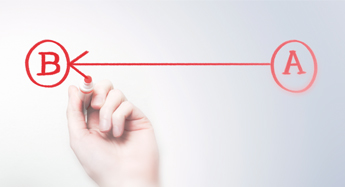Infringement of second medical use patents – July 2015 update
July 2015
In the on-going case of Warner-Lambert Company LLC v Actavis Group PTC EHF & Ors and The Secretary of State for Health [2015] EWCA Civ 556, concerning the proposed sale of generic pregabalin (Lecaent), which we reported in an earlier article, the Court of Appeal has had its first opportunity to address direct and indirect infringement of a Swiss-type second medical use claim.
Direct infringement
In the first Warner-Lambert judgment1, because a Swiss-type claim is a process claim, Arnold J treats the matter as a question of direct infringement under section 60(1)(c) Patents Act 1977. Section 60(1)(c) makes it an infringement to dispose of, or offer to dispose of, "any product obtained directly by means of [the claimed] process." The judge holds that in a Swiss-type claim the word "for" (i.e. the use of substance A in a medicament for the treatment of B) imparts nothing less than a subjective intention on the part of the manufacturer that the medicament or pharmaceutical composition concerned will be used for treating the specified condition. If there is no evidence that the generic manufacturer intended the drug to be used for the patented use, there is no infringement. There was no such evidence in Warner-Lambert and therefore the judge held there was no serious issue to be tried.
 However, on appeal, although the Court of Appeal has agreed that the direct infringement claim should proceed to trial, it has disagreed with the first instance judge's reasoning. The Court of Appeal could see no reason why the skilled person would understand "for" as requiring subjective intent. Such an understanding would require the patentee to prove that it is Actavis' wish or desire that they sell some Lecaent for pain. How does the patentee go about establishing this wish or desire? Instead, the Court favours an approach in which the skilled person would understand that the patentee was using the word "for" in the claim to require that the manufacturer knows or can reasonably foresee the ultimate intentional use for the infringing purpose, not that it has that specific intention or desire itself. The Court acknowledges that this is close to the test for indirect infringement (see below), but that this demonstrates it is workable.
However, on appeal, although the Court of Appeal has agreed that the direct infringement claim should proceed to trial, it has disagreed with the first instance judge's reasoning. The Court of Appeal could see no reason why the skilled person would understand "for" as requiring subjective intent. Such an understanding would require the patentee to prove that it is Actavis' wish or desire that they sell some Lecaent for pain. How does the patentee go about establishing this wish or desire? Instead, the Court favours an approach in which the skilled person would understand that the patentee was using the word "for" in the claim to require that the manufacturer knows or can reasonably foresee the ultimate intentional use for the infringing purpose, not that it has that specific intention or desire itself. The Court acknowledges that this is close to the test for indirect infringement (see below), but that this demonstrates it is workable.
Indirect infringement
The decision of the Court of Appeal in Grimme Maschinenfabrik v Derek Scott [2015] EWHC 72 had led to speculation that the principle established in that case – a person or company is liable for indirect infringement if they supply 'means essential' to a patented invention, when they know or it is obvious that the "ultimate users will intend to do acts amounting to infringement" – could be applied to second medical use scenarios. In his first Warner-Lambert decision2, Arnold J stated the view that because Swiss-type claims are process claims to the manufacture of a drug, the ultimate users – in this case wholesalers and pharmacists – will not be using Lecaent to prepare a pharmaceutical composition according to the Swiss-type claim at issue and cannot therefore infringe it. The indirect infringement claim under section 60(2) Patents Act 1977 was subsequently struck out in the judge's third Warner-Lambert decision3. However, the Court of Appeal has overturned the strike out decision and allowed the indirect infringement issue to proceed to trial. The Court was persuaded to do so for three reasons:
- The courts of The Netherlands and Germany have held that indirect infringement can occur in these circumstances;
- If there is threatened or actual infringement of the process claim, then it follows that dealings downstream in the direct product of the process are also infringements. Thus, the Court appears to reason, a claim to indirect infringement by downstream dealing should not be struck out as a viable cause of action; and
 It is arguable to say that when section 60(2) speaks of "putting the invention into effect", it may be legitimate to look not just at whether any one person is carrying out the invention such as to be liable for infringement. It may be that the invention is put into effect if pregabalin is manufactured by one person and supplied to another who intentionally uses it for the treatment of pain. In those circumstances, a person who supplies pregabalin with the requisite knowledge does provide means suitable and intended to put the invention into effect, albeit by the combination of manufacturer and user.
It is arguable to say that when section 60(2) speaks of "putting the invention into effect", it may be legitimate to look not just at whether any one person is carrying out the invention such as to be liable for infringement. It may be that the invention is put into effect if pregabalin is manufactured by one person and supplied to another who intentionally uses it for the treatment of pain. In those circumstances, a person who supplies pregabalin with the requisite knowledge does provide means suitable and intended to put the invention into effect, albeit by the combination of manufacturer and user.
The trial of this case was heard in the week beginning 26 June 2015.
If you have any questions on this article or would like to propose a subject to be addressed by Synapse please contact us.


Paul England
Paul is a senior associate and professional support lawyer in the Patents group based in our London office.
"...the Court favours an approach in which the skilled person would understand that the patentee was using the word 'for' in the claim to require that the manufacturer knows or can reasonably foresee the ultimate intentional use for the infringing purpose."

